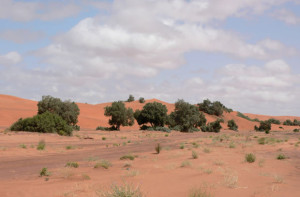 As a result of climate change, average temperatures in Australia look set to climb into the future, with the likelihood of far less bearable temperatures within the next couple of decades.
As a result of climate change, average temperatures in Australia look set to climb into the future, with the likelihood of far less bearable temperatures within the next couple of decades.
These increases in temperature and, by extension, more extreme weather conditions has the potential of impacting several Australian industries, from mining all the way to 9 to 5 office jobs.
Increasing temperatures and Australian industries
If we look at industries such as mining, transport and logistics, these are just some of the numerous industries that could be greatly impacted by rising temperatures. Given the long hours and often a large amount of exposure to the elements, if Australian summers only get hotter over time, then this is going to place greater physical strain for those involved.
While the intensity of heat can be offset with things such as air conditioning, such solutions can only go so far. Because an increase in temperature is just a matter of comfort, it’s also a matter of health. If temperatures do increase, then the likelihood of individuals suffering from heat-related illnesses such as heat exhaustion and, more concerning, heat stroke.
Other effects could include an increased likelihood of skin cancer, general illness caused by rapidly changing temperatures (such as when a person regularly goes from an air conditioned environment to the outside heat), and increased occurrences of flus and colds.
In a more general sense, higher temperatures will simply make work environments less manageable. And for particular workers, such as farmers, intense heat can have very real impacts on produce and livestock (you can read more about this in our Brisk Fridge blog).
Extreme weather
Besides increasing temperatures, climate change will also lead to more extreme, unpredictable weather conditions. Such rapidly changing weather conditions could impact various industries in Australia, from the likes of mining and transport to the more office-based industries such as consultancy and marketing.
It’s pretty easy to see why when you consider extreme conditions could lead to flooding, damaging hail and wind, increases in fires, and more. Such conditions can affect almost any industry, regardless of the nature of the industry or the location of any business.
What can be done?
While climate change is a very real concern, the simple fact is there is no quick fix for it. We know the solution – reducing carbon emissions and the creation of other pollutants by replacing them with clean, renewable energies.
However, even if we were able to stop all emissions in one fell swoop, such a positive effort would not be felt straight away. What you may not know is that the atmosphere has a type of lag to it in terms of how it reacts to the pollution we create. In effect, with a complete end to carbon emissions, it would take approximately 100 years before the atmosphere would reflect this and become carbon free.
But while it may take an entire century for positive changes to be felt (regardless of a total carbon emission removal or a certain percentage), if we continue down the current path we’re taking, the impact will be far worse 100 years down the line.

